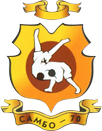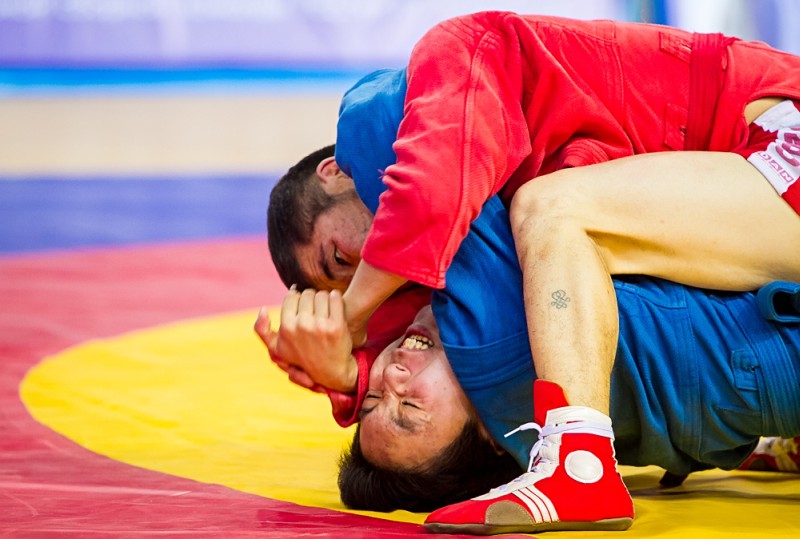
SAMBO
The world famous Russian military and sporting skill setSambo (SAMozashchita Bez Oruzhiya — Self-defense Without Weapons) is a sophisticated system of self-defense developed in the USSR by the synthesis of several national forms of martial arts. The sambo tradition is rooted in the culture of the peoples of Russia and in the native wrestling styles.
- Birth
of Sambo - the sport was recognized by the Sports Committee of the USSR
In the words of Nikolai Medvedev, USSR champion and winner of the World Cup, “Sambo is the philosophy of openness to all that is best and innovative in all national styles of combat.” “Sambo is constantly evolving, updating and fueling itself. It is not an archive, not a compilation of throws and holds. It is a living thing,” said the founder of Sport Sambo Anatoly Kharlamiev, the athlete and instructor whose book Sambo (1938) marked the beginning of the theory and practice of ‘self-defense without weapons’. Sambo is the philosophy of openness to the very best in all national styles of combat. This philosophy is an integral quality of the Russian character.
- Pugilism,
Russian wrestling - Georgian
wrestling - Tatar
wrestling - Azerbaijani
wrestling - Kazakh
wrestling - Uzbek
wrestling - Finnish-French
wrestling - freestyle
American
wrestling - English
wrestling - Swiss
wrestling - Japanese judo
and sumo
The establishment of Sambo as a sports discipline was preceded by the work of Viktor Spiridonov and Vasili Oshchepkov. Spiridonov, a Russian officer and one of the leaders in the fight against organized crime in Soviet Russia, was one the few jiu-jutsu masters of the time.
-
1940
Emergence
-
19461946
Formal name
of Sambo -
1958
International debut.
Brussels, World’s
Fair Expo ’58
By 1921 he had laid the groundwork for a new ‘system composed of the best practices of existing systems’. Exactly this development, unique for its time, formed the basis of sambo. Spiridonov and his students from the CID actively participated in police operations to wipe out the criminal elements and hot-spots of the day. He created a method of teaching self-defense, which at that time was non-existent in foreign systems.
of self-defense
open in Dynamo
organizations
under Spiridonov’s
leadership:
- Leningrad St. Petersburg
- Ukraine
- Rostov-on-Don
- The South Caucasus
- Sverdlovsk Ekaterenburg
- Siberia
Vasily Oshchepkov, born in Sakhalin, having practiced judo for many years, gradually began to deviate from the sacrosanct Japanese canons. After the February Revolution of 1917, he became an instructor in the unarmed combat ‘training course for police officers in the city and county police’. He later spent several years in Japan and China, where he became a black belt in judo. Back in Russia he modified and introduced Russian-language terms to judo. He replaced the bow with mandatory handshakes before and after the bout, bringing the sport in line with Russian traditions. He also introduced a division of weight classes. On top of that, he worked to improve combat and self-defense techniques, forming the basis of a new kind of martial arts. Later on Oshchepkov organized competitive matches with Spiridonov’s students, and representatives of several national wrestling styles, primarily those of the Georgian chidaoba.
From the moment of its inception, sambo was seen as an effective means to a person’s comprehensive physical development. It raised one’s agility, strength, endurance, tactical reasoning, and assisted in formation of civic and patriotic fidelity.
In the 1930’s sambo
was included in the training
standards of the TRP
Ready for Labor
and Defense
From an early age millions of Soviet citizens are familiarized with the basics of self-defense without weapons, strengthening their health and building character.
In March of 2013 Russian President Vladimir proposed recreating an analogue to the TRP sports complex. The head of state proposed this idea in a meeting about developing physical education. On March 13, 2013 Vladimir Putin attended the opening of a new building in the Sambo-70 Center.
Championships (2006-09)
gold
silver
bronze
медалей
Today sambo is practiced in 72 countries, with sambo federations in 10 countries. Key discussions about the recognition of sambo as an Olympic sport are in progress.
The Sambo-70 Educational Center is a Russian martial arts school founded in 1970 by the first sambo world champion David Rudman.
Numerous world, European and Russian champions trained and continue to train within the walls of the school. This includes champions in sambo, boxing, sumo, judo, gymnastics, karate, sport dance and other sports. After finishing their competitive careers, graduates of the center go on to work in special units of the MVD, FSB and tax authorities.
years
students
- 8 are honored masters of sports
- 47 world-class masters
- 300 masters of sport
- 18 honored coaches
- 5 candidates of pedagogical sciences







